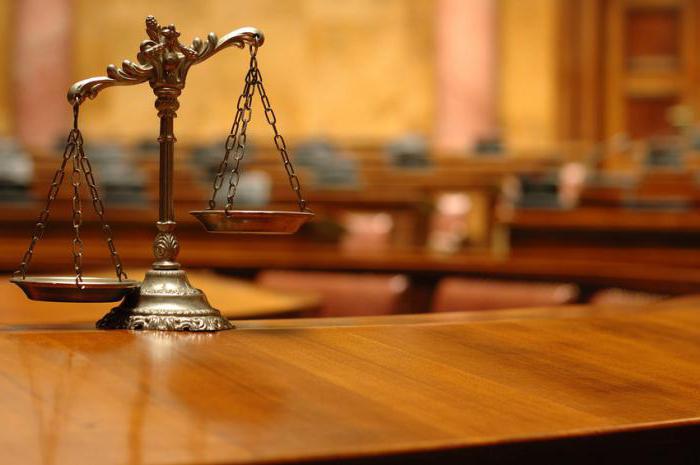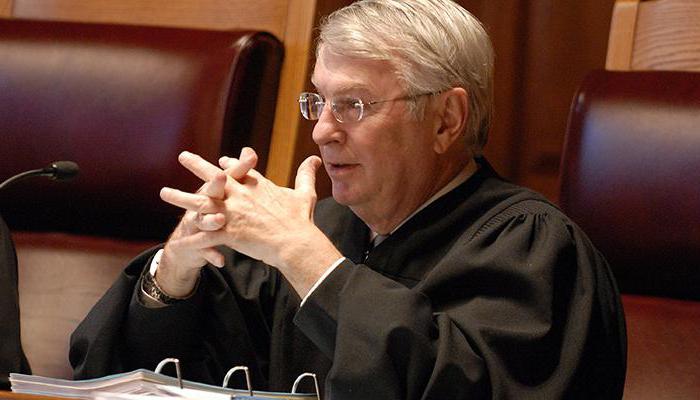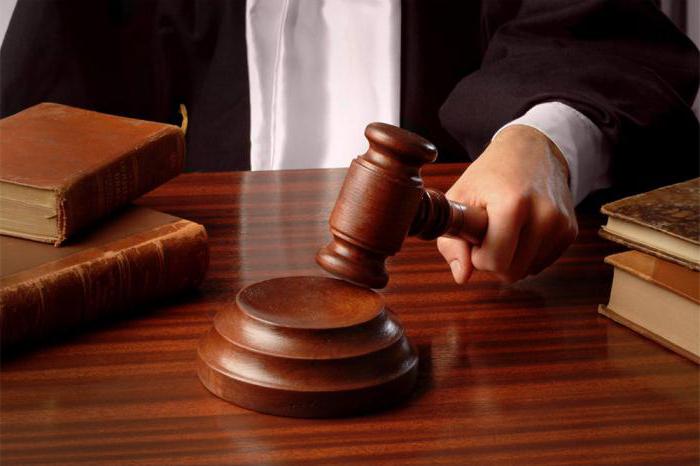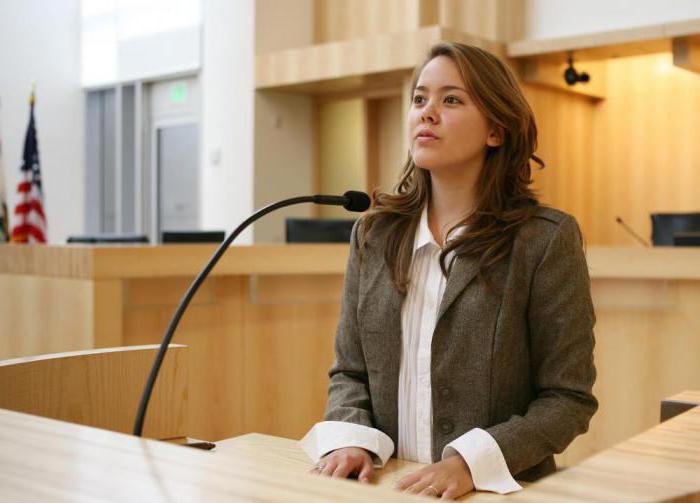Trial has become an integral part of the modern world. Every year, millions of lawsuits go to the courts of various instances. One of the most complex procedurally recognized claims in the arbitration process. All aspects of such a case, even despite the narrow specialization of the pending cases, have their own characteristics that are distinguishable from the usual civil litigation. Let's try to understand this difficult matter in detail.

The concept of the arbitration process
By the arbitration process is meant the professional activity of the arbitration courts, which is clearly established and regulated by the legislative norms of the arbitration procedural law. This activity is aimed solely at protecting the legal rights of individual entrepreneurs and legal entities that have been violated or disputed. The arbitration process parses only what affects business and economic activity.
Difference from civil procedure
But, even knowing the precise wording, people cannot always distinguish arbitration from others. They often confuse the arbitration and civil proceedings, let’s try to figure out how they differ from each other.
Firstly, arbitration cases are heard by arbitration courts, and civil cases in courts of general jurisdiction. So, when you come to the arbitration court in the case of damage to your bicycle, you will come across a statement that they simply will not accept it, advising you to go to a court of general jurisdiction. Each court has its own narrow and definite sphere, in which it is obliged to understand and consider. Entrepreneurs protect their personal rights in civil proceedings, and entrepreneurial interests in arbitration.
Secondly, the arbitration process has different legal rules of proceedings. For example, you filed a lawsuit. In the civil procedure, a copy of the statement of claim and all its annexes will be transferred to the defendant by the court, in arbitration it is the plaintiff's duty. Differences also apply to evidence. So, in arbitration, the oral testimony of eyewitnesses and witnesses does not have much power. Documentary evidence is preferred.
Lawsuit in arbitration
In order to initiate proceedings in the arbitration court, it is necessary to file a lawsuit. The arbitration process of the arbitral tribunal without a lawsuit does not begin. It is he who is considered the basis for initiating proceedings. A lawsuit is a claim of a plaintiff against a defendant set forth in writing and submitted to a court in order to protect their legal rights. Its shape must strictly comply with paragraph 4 of part 2 Art. 125 Agribusiness of the Russian Federation. In particular, contain information about the plaintiff, place of residence, phone number, the activities he is engaged in, and as whom he is registered in the tax. In the case of a civil lawsuit, the last paragraph is optional, because non-working citizens can also file it. The arbitration process parses economic disputes arising only from organizations and entrepreneurs.

In addition, it is necessary to indicate the subject of the case, violated rights and interests, the circumstances in which they were violated, and by whom exactly. You must indicate your requirements for the defendant and the amount of compensation that the plaintiff intends to receive.
Members
The concept of the arbitration process implies the presence of participants. The key participant in such a dispute is the arbitration court itself. He leads the whole process.

In addition to the court, the main participants include parties, i.e. organizations or individual entrepreneurs, between which a dispute arose. They are divided into:
• Plaintiff. This is the person who sued in defense of his rights. Sometimes a lawsuit may be filed by a proxy or representative, in which case the plaintiff still remains the one whose rights have been affected and in whose favor the lawsuit is filed.
• Respondent. That is, the person against whom the lawsuit is filed. The defendant is the company or entrepreneur that, according to the plaintiff, has violated his rights.
There are also other participants in the case. These are people who are not personally interested in the outcome of the case, only helping the court establish the truth - translators, witnesses, experts.
Stages
At the beginning of the proceedings, the proceedings take place in court of first instance. It is he who carries out the resolution of the differences between the parties on the merits. This is considered the first stage in the arbitration process.

At the second stage, a re-examination of the case is already in the appellate court. This is required if newly discovered circumstances arise that were not previously known, or if it is necessary to verify the legality of the decision by the court of first instance.
The third stage concerns already cassation instance which checks the decisions of the first two instances. It is carried out more for the purpose of supervision rather than review of the case. The case may fall into this instance both in the presence of a complaint and without it, at the request of the supervisor.
Most of the arbitration cases are resolved at the first stage. In the event that the plaintiff or defendant is not satisfied with the court decision, they have the right to appeal it.
Proving
Proving in the process is one of the most important stages. Without this, it is simply impossible to confirm the fact that the legitimate interests were really violated precisely by the action or inaction of the defendant.
Each party to the proceedings in the arbitration process has an equal right to prove their point of view by collecting, analyzing and presenting facts to the court. The court has the right to require the parties to provide this evidence, as well as send it for examination for verification of authenticity. But providing evidence alone is not enough, it is necessary to establish their direct involvement in the case, relevance in a particular situation and reliability. For this, proof is needed.
There is a series of evidence defined by law that does not need proof. Namely:
• Well-known facts recognized by the court. To recognize them as such, it is necessary that they be known to a large number of people, including the entire composition of the trial. It can be: natural disasters, earthquakes, disasters, emergencies, coups.
• Already established facts. This should be evidence that was already recognized earlier by a court decision (civil, criminal, arbitration) that entered into legal force.
Proof of
Evidence in the arbitration process is divided into:
- Real. These are inanimate objects by their nature, carrying on their appearance or internal properties information about the prints of events, tracks, actions. It can be objects with fingerprints, voice recorders with recordings, etc. These include written evidence, that is, documents and other papers.
- Personal They have such a name, since they come from individuals. This includes the testimony of witnesses, explanations of the parties, expert opinions.
- Derivatives. This is all that was obtained from other sources. Copies of protocols or other documents, testimonies of witnesses who personally could not observe any action, but received information about it from the words of other persons or from documents. They are taken into account only in rare exceptions, since it is difficult to establish their reliability.

All evidence must be obtained legally.If they were obtained in violation of regulatory legal norms, then they are not recognized as evidence.
Direct and indirect
The arbitration process, like many others, consists of considering not only direct, but also indirect evidence. Although both of these categories are recognized as facts, they are not identical.
Direct evidence is closely linked to the proceedings. For example, if it is necessary to prove the presence of transportation of a product, then a direct evidence in the case will be a waybill. Indirect evidence does not directly relate to the case at hand, but it can be used to establish whether there is or is not yet some evidence in the case.
Features of production in the arbitration process
Each process has its own characteristics. So, for example, a judge of an arbitration court may, at his discretion, combine several similar cases involving the same persons in one general proceeding.
Another feature can be called the possibility of creating a special arbitration proceedings. In such a process, a dispute about violated or contested rights will not be considered. Instead, the issue of establishing a legal fact will be examined. For example, the fact of bankruptcy of an organization may need to be established. The peculiarity of such a case in the absence of the defendant.



